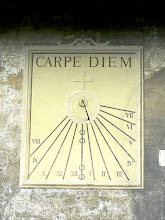SAIGO TAKAMORI, THE LAST SAMURAI


PHOTOS:
SAIGO TAKAMORI,(1827-1877) THE LAST SAMURAI
" " Statue in Tokyo's Ueno Park
__________________________________________
THE LAST SAMURAI
****************
In Japan, Saigo Takamori is known as the "last samurai".
His final quixotic rebellion against the recently founded, modernizing Meiji Imperial government that he had been instrumental in establishing...
is the basis of the Tom Cruise movie of that name.
At six feet and 200 pounds, he was much more physically imposing than the actor Ken Watanabe, who portrays him in the Hollywood film.
Not only was he a monster of a man in 19th century Japan, but, as you can see from his portrait, he had intense eyes and a forthright, piercing gaze that reflected his character and philosophy as an uncompromising man of action.
Born on February 7, 1827 in what was then Satsuma Han, a feudal domain of the Tokugawa Shogunate, he died, as legend would have it, by his own hand on September 24, 1877, while making a final stand against Meiji imperial forces.
What intrigues about his story is that he is held up as an archetype of the samurai spirit --the last true samurai-- even though he lost, not just the battle, but the whole war.
He strived to preserve the samurai as a class and slow the newly established Meiji government on its path to modernization, only to be completely vanquished.
Not just his army, but also his ideas and his very cause were soundly defeated.
Japan is the paragon of modernity it is today partly because he was defeated.
The mystery begins to clear when one realizes that Saigo Takamori is one of the most famous examples of a Japanese tragic hero (the most famous example being Minamoto no Yoshitsune).
In Japan, a tragic hero must show his sincerity by making the ultimate sacrifice, often for a lost cause.
This is not the same idea as the character Jefferson Smith had in the movie Mr. Smith Goes To Hollywood when he said: "Lost causes are the only causes worth fighting for."
As Ivan Morris writes in his classic book, "The Nobility of Failure: Tragic Heroes in the History of Japan" :
"There is another type of hero in the complex Japanese tradition...Faced with defeat, the hero will typically take his own life in order to avoid the indignity of capture (or surrender) vindicate his honor (or his nation's honor) and make a final assertion of his sincerity."
_____________________
In a letter he wrote to Ivan Morris just before committing seppuku, the novelist Yukio Mishima said this:
"...You may be one of the few people who can understand my conclusion. Influenced by Wang Yang-ming philosophy, I have believed that knowing without acting is not sufficiently knowing and the action itself does not require any effectiveness."
_____________________
Saigo's was steeped in the Neo-Confucianism of the Chinese philosopher Wang Yang-ming, whose conception of knowledge and action as an indivisible unity had, along with Zen Buddhism, an enormous impact on Bushido.
Saigo exhibited all of the traditional samurai qualities:
valor; respect; rectitude; honor; frugality; loyalty; and benevolence toward underlings.
At the same time, he had an unassuming manner, friendly smile, and hearty laugh that won him legions of friends and followers.
=============================
The following note in this Blog, is the story of
Saigo Takamori's life, the Real Last Samurai.
************************************************
...


0 Comments:
Post a Comment
<< Home